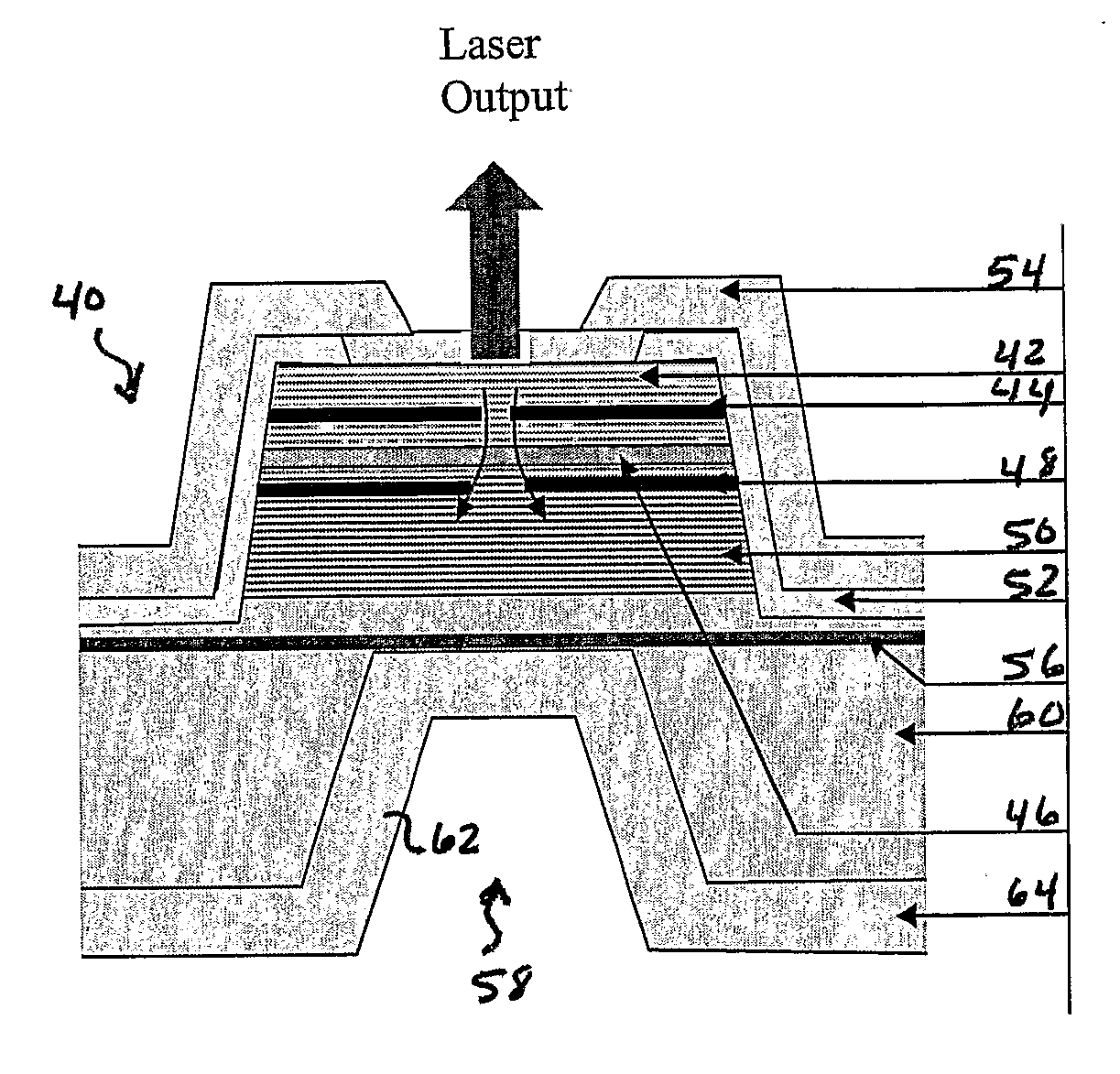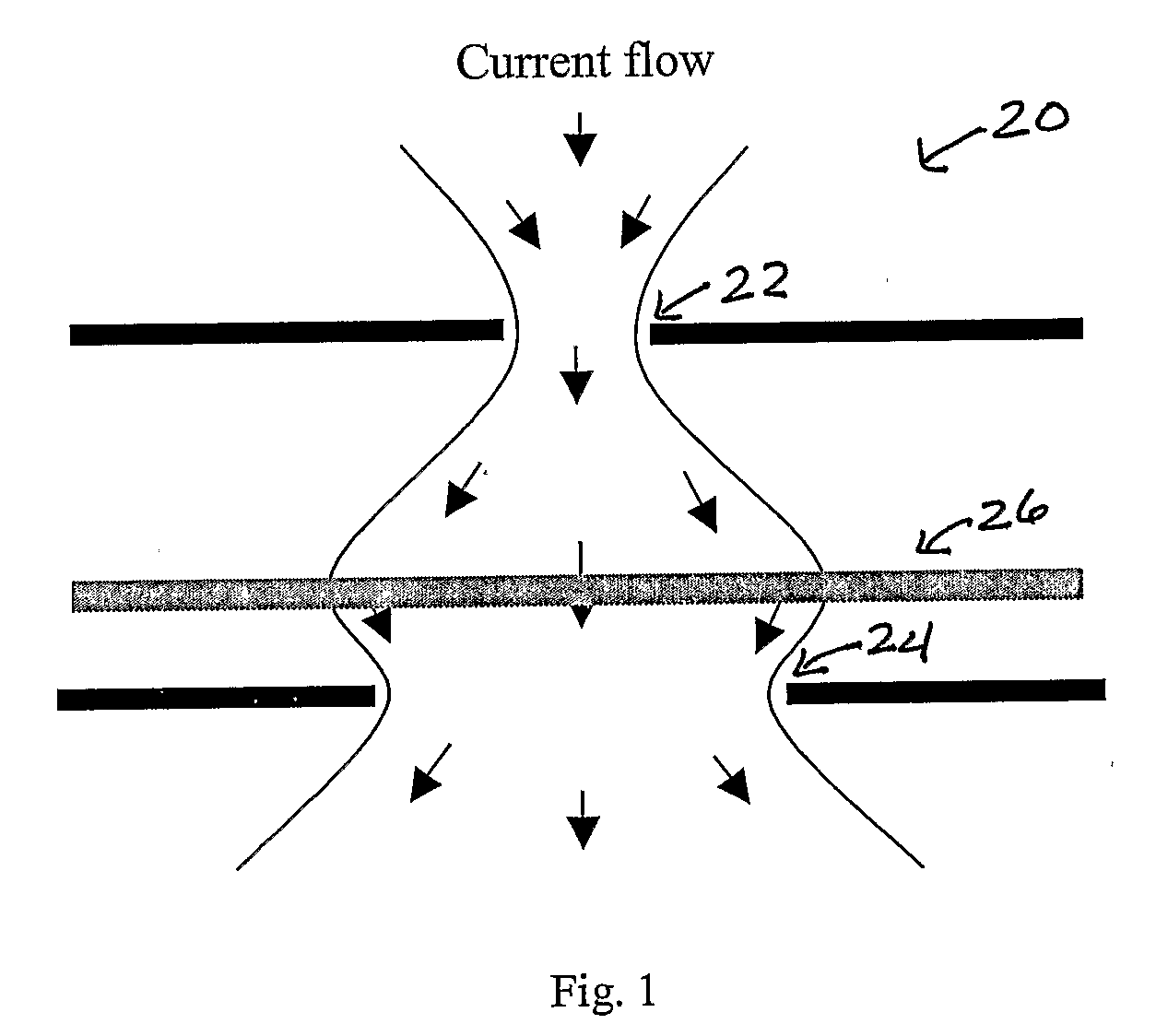High Power Vcsels With Transverse Mode Control
a transverse mode control and high-power technology, applied in the direction of semiconductor lasers, laser details, electrical apparatus, etc., can solve the problems of complex transverse modal behavior of vcsels at high pump rates, high optical power, and many inadequacies of vcsels
- Summary
- Abstract
- Description
- Claims
- Application Information
AI Technical Summary
Benefits of technology
Problems solved by technology
Method used
Image
Examples
Embodiment Construction
[0043] A schematic diagram of the location of a pair of apertures in accordance with the invention is shown in FIG. 1. In a VCSEL construction 20, at least two oxide apertures 22 and 24 with different sizes are located on each side of an active region 26 at varying distances from the active region in the DBRs or mirror stacks on each side of the active region. Current confinement and spreading in the cavity is controlled by the size and position of the oxide apertures. The current distribution strongly favors single mode operation if the size and distance of the apertures from the active region are optimally chosen. Since the mirror stacks are built up in pairs of mirrors as is known in DBR creation, distances of the oxide layers and oxide apertures from the active region are measured here and referred to here in “mirror pairs.”
[0044] Detailed 3D modeling was carried out using Femlab, a popular finite element tool, to see the effect of double oxide-aperture in profiling the spatial ...
PUM
 Login to View More
Login to View More Abstract
Description
Claims
Application Information
 Login to View More
Login to View More - R&D
- Intellectual Property
- Life Sciences
- Materials
- Tech Scout
- Unparalleled Data Quality
- Higher Quality Content
- 60% Fewer Hallucinations
Browse by: Latest US Patents, China's latest patents, Technical Efficacy Thesaurus, Application Domain, Technology Topic, Popular Technical Reports.
© 2025 PatSnap. All rights reserved.Legal|Privacy policy|Modern Slavery Act Transparency Statement|Sitemap|About US| Contact US: help@patsnap.com



